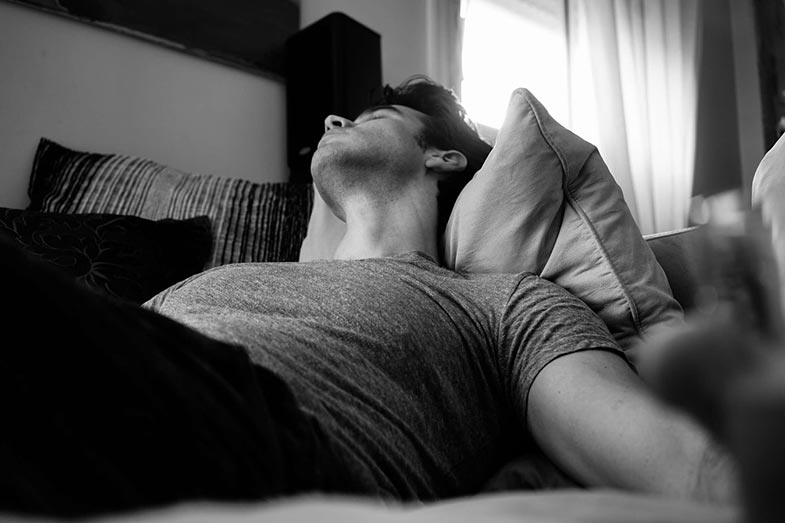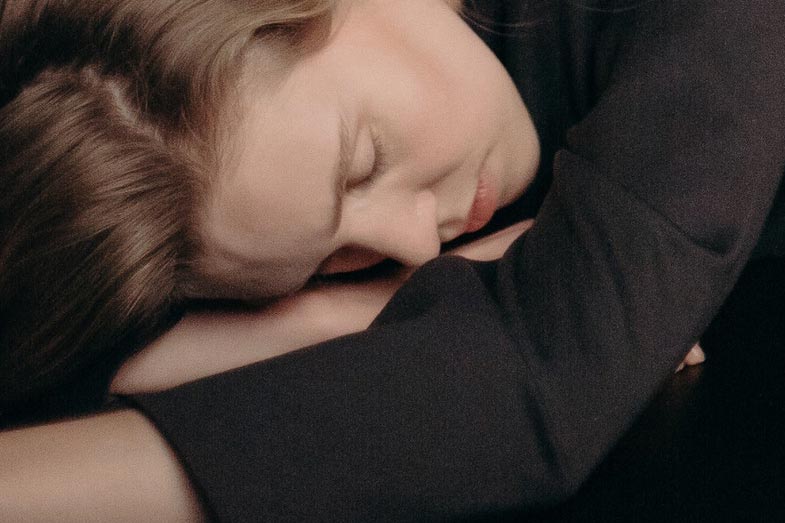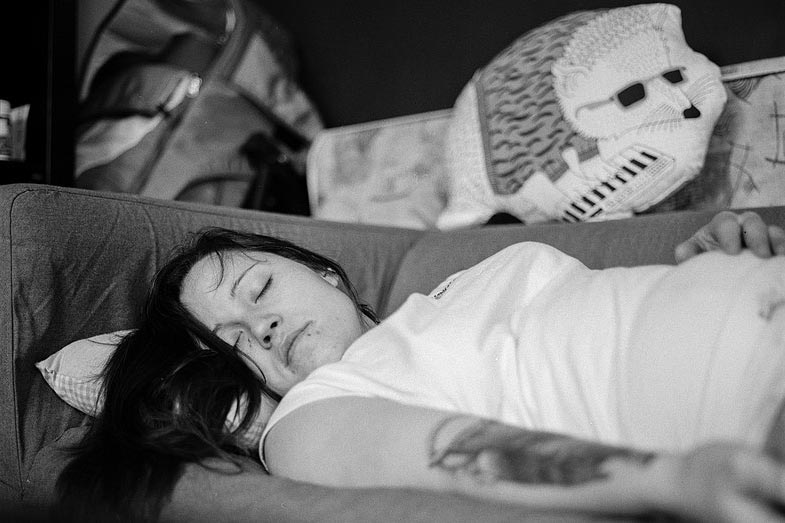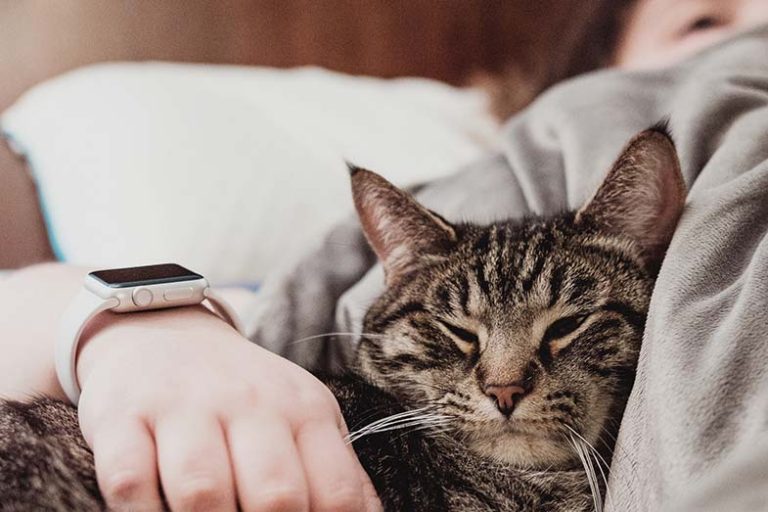Sleep Paralysis Vibrations – What Are They?
Disclosure: We may get commissions for purchases made through links in this post.
Old hag or sleep paralysis has long been experienced by people and for centuries, and there are different beliefs as to why it happens, such as aliens and demons. Although some still believe such, as medicine progressed, we now have a better understanding of sleep paralysis, like knowing that it isn’t life-threatening. However, sleep paralysis is uncanny and frightening, especially if you experience a vibration sensation.
So, what are the sleep paralysis vibrations? Healthy people and those with mental health or sleep problems may experience sleep paralysis, which is often accompanied by hallucinations. These hallucinations have four types, and the vibrations felt fall under the tactile hallucination category.
As horrifying and haunting sleep paralysis might be, understanding the different hallucinations will, in a way, help ease those feelings once you have sleep paralysis episodes. That’s what you will understand today, plus learn who is more prone to sleep paralysis and some ways on how to wake from sleep paralysis.

Sleep Paralysis Hallucinations
Sleep paralysis is a parasomnia or an ill-favored sleep event wherein the person can’t move their body and speak but can move their eyes, grunt, whimper, squeal, groan, or whisper. During a sleep paralysis episode, you are also completely or partially aware of your surroundings. It usually happens in the period between waking up and sleeping, which are when you are falling asleep or when you’re waking up from sleep.
Since that is the stage of sleep when you can have active dreams, some of you may have hallucinations or vivid imaginations. One person might have a different kind of hallucination from another, though.
So, what are the common hallucinations experienced during sleep paralysis? Here they are:
1. Auditory Hallucinations
From the term itself, auditory, it is a kind of hallucination wherein you hear certain things, either routine or extraordinary sounds. Some of the most typical ones include human voices in different languages, screams, whispers, and laughs. Others also sometimes hear buzzing, breathing, ringing, knocks, footsteps, growls, horse carriages, and radio frequencies. Ceratin sounds, though, can’t be defined and characterized.
2. Olfactory Hallucinations
Although not very common, some people who have sleep paralysis episodes often have hallucinations related to smell. The odor may be something familiar or unusual to them.
3. Tactile Hallucinations
Most people who experienced sleep paralysis reported tactile hallucinations or those associated with the sense of touch or something physical. The most common one is the feeling of someone or something holding or pushing them down or pressure on their chest. Another is the feeling of numbness, tingles, and vibrations.
Others even have an out-of-body experience, such as floating, falling, and flying, while some will experience chilling and freezing. The less common ones are being dragged or moved from one’s bed, sexual contact, rape, uncontrolled smiling, crawling bugs on the skin, breathing in one’s ear, and being bitten by a human or animal.
4. Visual Hallucinations
During sleep paralysis, you can actually open your eyes. Through your peripheral vision, you usually see a dark human figure, a shadow, or a ghost standing next to your bedside. This hallucination is why some cultures or people relate sleep paralysis to the supernatural. At times, you don’t just see one person but a lot of people.
Apart from seeing a human figure, some experience seeing bright colors, flashes, lights, bugs, animals, gargoyles, and disembodied hands. Some individuals also reported seeing floating objects and unclear images.
How Do You Wake up From Sleep Paralysis?

Since you are partially or entirely aware of your surroundings while experiencing sleep paralysis, you would know that you are having an episode, plus what you see, hear, feel, and smell are merely hallucinations. Apparently, the first thing that you would think of is to wake up.
But how do you do it? Here are some suggestions:
1. Move Your Toes
Moving your toes might seem impossible since, during sleep paralysis, you can’t move your body; you just lay still on your comfortable, memory foam mattress (view on Amazon). However, some people can actually move their toes.
What you need to do is relax and focus on your big toe and try to lift it or wiggle it. Some will wake up immediately, but others won’t succeed. If that’s the case, you can try the next one.
2. Do Some Controlled Breathing
Some people might have difficulty breathing while having sleep paralysis, but this does not necessarily mean that they can’t breathe. Thus, try to relax, focus on your breathing, and then control it by inhaling slowly through your nose and then exhaling with one full blow through your mouth. To wake up from sleep paralysis, though, you need to accompany controlled breathing with a strong determination to wake up.
3. Squint or Look Around
Remember that one of the parts of your body that stay active or you can move is your eyes. Some who experienced sleep paralysis shared that by squinting their eyes three times, they were able to wake up from the episode.
Another thing that you can try is to look around by moving your eyes from left to right and vice versa. By doing so, you can start sending signals to your brain that you are already awake, helping cut the sleep paralysis episode or sleep in itself.
4. Move Your Lips
Once again, some people might not be able to achieve this since you can’t really move most parts of your body. Nevertheless, there is no harm in trying.
To succeed, try to focus your mind on your lips and start moving it from left to right and vice versa. As similar to moving your eyes, you can send signals to the brain that you are awake.
5. Seek the Help of a Sleeping Partner
Since it is safe to wake someone from sleep paralysis, if you are sharing your bed with someone, it is best to inform them that you sometimes experience sleep paralysis. You must also inform the person of the possible signs that you are having an episode, such as heavy breathing, grunting, whimpering, and moaning.
Another thing that you can do so your sleeping partner would know if you have sleep paralysis is to cough. Similar to breathing, you can control coughing, too.
Bonus Tips
Remember that the five methods of trying to wake up from sleep paralysis may or may not work. Don’t worry since sleep paralysis won’t last long, so all you have to do are the following:
1. Go With the Flow
What you need to do if you can’t wake up is to go with the flow by doing the following:
- Once you are aware that you are having sleep paralysis, remind yourself that it is common, temporary, and has a short duration, just a few seconds or minutes.
- You must also tell yourself not to be afraid, and whatever you see and sense is merely a hallucination or imagination.
- Divert your attention to something happy and wonderful, like thinking of your loved ones, birthdays, going to the beach, or any happy memory.
- Just relax and try not to move until the sleep paralysis is over.
2. Relax Your Muscles
Relaxing your muscles can help you cut the sleeping episode shorter. Some people who had sleep paralysis say that the more they tried to move, the longer the episode took. Thus, if you can’t wake up by doing the four suggested methods, just try to relax your muscles. Soon enough, you’ll wake up lying in your bed with your body under your warm and cozy blanket (view on Amazon).
Who Suffers From Sleep Paralysis?

Data gathered in 2011 noted that sleep paralysis has been experienced by approximately 7% of the population, but is more common in individuals from 20 to 30 years of age. Students also usually have sleep paralysis, possibly due to stress and lack of sleep, which are two common risk factors for sleep paralysis. For similar reasons, individuals who work late at night will experience sleep paralysis more than those who strictly follow an eight-hour working period.
Some experts also suggest that sleep paralysis may have something to do with genes, although this isn’t proven yet. Others suggest that individuals who were abused at some point in their lives, whether or not they can remember it are more prone to having sleep paralysis, and the hallucinations are often related to their experience. Other individuals identified to experience sleep paralysis more than others are those with anxiety, depression, and panic attacks.
The groups of people mentioned above specifically experience isolated sleep paralysis (ISP), which is a term used by doctors to differentiate it from sleep paralysis due to narcolepsy. Narcolepsy is a sleeping disorder wherein the sufferer has uncontrollable sleepiness during the day. The sleep paralysis at this point is a symptom and usually happens during the “falling asleep” stage.
Final Words – Sleep Paralysis Vibrations
Understandably, when you wake up and can’t move your body and speak, you will feel terrified. Add the hallucinations, and it will feel like you are in a horror movie! That’s okay, but make sure that once you realize you’re having a sleep paralysis episode, you must try to calm yourself down, feel the comfort provided by your large, hypoallergenic pillow (view on Amazon), and then remember the things you learned today.






